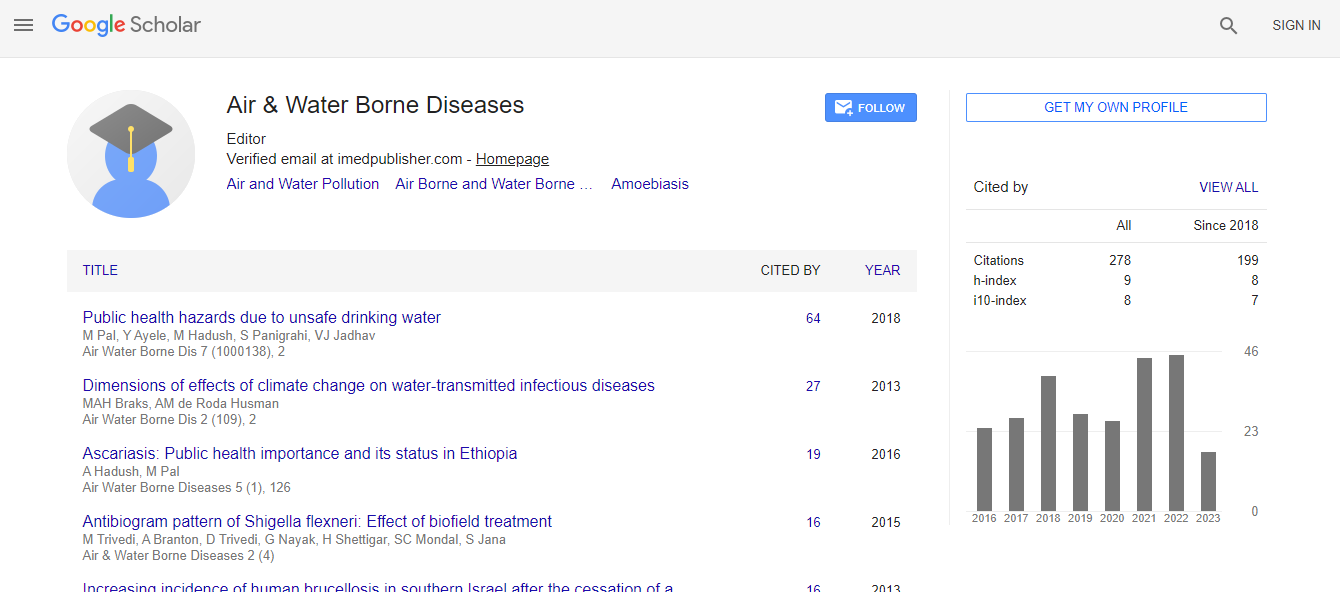Review Article
An Unusual Transmission of Legionella Pneumonia: One of Waterborne Diseases
Koichi Nishimura*Academic Visitor, Division of Clinical Science, St. George’s Hospital Medical School, London, England
- *Corresponding Author:
- Koichi Nishimura
Division of Clinical Science, St. George’s Hospital Medical School
Cranmer Terrace, London, SW17 0RE, England
E-mail: koichi-nishimura@nifty.com
Received Date: November 29, 2012; Accepted Date: December 26, 2012; Published Date: January 05, 2013
Citation: Nishimura K (2013) An Unusual Transmission of Legionella Pneumonia: One of Waterborne Diseases. Air Water Borne Diseases 2:105. doi:10.4172/2167-7719.1000105
Copyright: © 2013 Nishimura K. This is an open-access article distributed under the terms of the Creative Commons Attribution License, which permits unrestricted use, distribution, and reproduction in any medium, provided the original author and source are credited.
Abstract
According to the definition in the Air and Water borne Diseases journal home page, waterborne diseases are infectious in nature that spread primarily through contaminated water. I have been a chest physician in the Department of Respiratory Medicine for the past three decades in Japan. While we often see patients with airborne diseases in clinical practice, it is rare to examine subjects with symptoms suggesting waterborne disease. Since the first recorded outbreak of Legionella pneumophila pneumonia in Philadelphia in 1976, many outbreaks have been reported. Geographic differences in the epidemiology of Legionella infection underscore the importance of knowing local patterns. In Western countries, outbreaks often are traced to cooling towers, air-conditioners, humidifiers and respiratory-therapy equipment. Legionella pneumonia can be acquired by inhalation of aerosols containing Legionella species or by micro aspiration of water contaminated with Legionella species. Most Japanese enjoy this traditional style of communal bathing, especially at one of the many rustic hot-springs bathing (“onsen”). Until recently, clinicians never expected to see patients with Legionella pneumonia transmitted in an onsen. In this brief review; I intend to introduce the relationship between Legionella pneumonia and onsen in Japan.

 Spanish
Spanish  Chinese
Chinese  Russian
Russian  German
German  French
French  Japanese
Japanese  Portuguese
Portuguese  Hindi
Hindi 